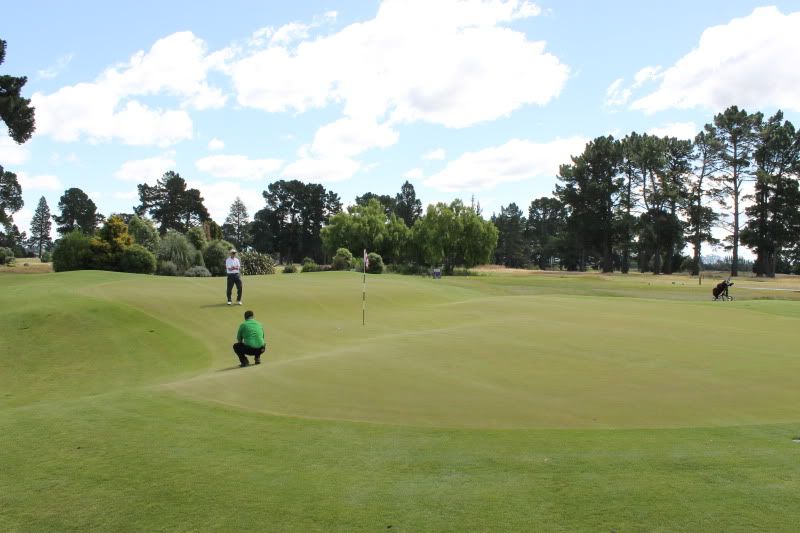Hey Dane
It would be the 5th green you are thinking of.
The great thing about the Harewood redevelopment was everyone was working together and operating on the same wavelength. Right from the start, an overall goal or picture was formulated that was to influence all the decision making for the project. For example, grass selection was primarily based on creating not only a low input course but intended green contours and slopes. With the design calling for bold shapes care had to be taken that greens wont become too fast. Browntop was selected with the desired long term speed of approx 9 feet being the goal. With the input of all those involved the conclusion was reached that a solid mowing and rolling program would see these speeds achievable without creating a workload exceeding the clubs resources. With this target green speed, it enabled design to push (by NZ standards) some boundaries without the fear of speeds compromising playability.
As Don talked about, challenges like the 5th green are fine as long as allowances are made for its maintenance. By minimising the number of bunkers through the course using low input species, time saved in those areas is available to then reinvest into maintaining features that are more labour intensive. Certainly, you wouldnt want 18 greens like that one, but the others contain plenty of movement as well.
Hopefully Scott can chime in with a better account of the design philosophy, but essentially it is a green created to be somewhat unique and challenging but all sorts of fun at the same time. It is a hole best viewed as a golfer and not as a greenkeeper.
I havent seen it scalped yet, and I have seen it a number of times. If it does, it may be more pronounced on one direction. I feel that minor scalping or misses have fairly minimal impact on the golf ball though and are acceptable to a degree in the pursuit of interesting golf.
Cheers
Grant (11mm down here today. Pretty heavy for these parts)
Here is a photo of the 5th green:
